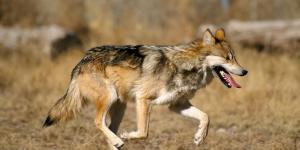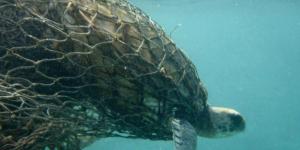Why Is the Iberian Lynx in Danger of Extinction


The Iberian lynx (Lynx pardinus) is a wild cat found on the Iberian Peninsula in southwestern Europe, and more specifically Spain. It is currently listed as Endangered on the IUCN Red List, which is the world's most comprehensive inventory of the global conservation status of biological species. In the last few years, the Iberian lynx's threat category went from “Critically Endangered” to “Endangered”. In spite of this, the Iberian lynx continues to be the world's most endangered cat.
In this Animal Wised article, we will review its current conservation status, explain what makes this wild cat especially vulnerable and evaluate the causes behind why is the Iberian lynx in danger of extinction.
Characteristics of the Iberian lynx
The Iberian lynx is one of the most elusive species in the world, in fact, very few people have ever seen an Iberian lynx in the wild. In order to better understand this very mysterious feline, we will explain its most remarkably physical and behavioral traits:
- It has a fawn coat of brown colors with spots that vary in each individual. Their coat also allows them to perfectly blend into the bushes.
- Their head is small and is characterized by having a sort of beard, which is present in both males and females, although is longer in males.
- Their ears are elongated and triangular, ending in hairy tips, which are longer in females.
- Their tail is short and ends in a black fur tassel. They keep their tail upright when they are alert.
- Their legs are robust and long. They have four toes with retractable claws that allow them to hold tightly to their prey.
- It is difficult for them to adapt to environments other than their own, making their survival even more challenging.
- Regarding its diet, the Iberian lynx's favorite prey is the wild rabbit (Oryctolagus cuniculus), which accounts for up to 90% of its diet.
- Lynxes are solitary and territorial creatures who do not normally interact with each other. They only come together during reproductive season.
- Adults defend a territory of about one acre and rely on olfactory markings to deter other individuals of the same sex.
If you want to know more about lynxes and the different species, don't miss this article on types of lynxes.
Where does the Iberian lynx live?
As we mentioned before, the Iberian lynx is endemic to the Iberian Peninsula, meaning its wild population is limited to this area. Its area has decreased by 99% in the last 50 years, since it occupied nearly 5800000 square hectares in the 1950s, but only about 35000 square hectares in 2000.
Both its geographical limits and the size of its populations are currently not known to an exact degree. It was estimated that there were 500 lynxes in the wild in 2017, but by the end of 2019, the number had increased to over 800. Lynxes inhabit Extremadura, Andalusia (the region with the largest population), Castilla-La Mancha, and some parts of Portugal.
The typical habitat for this species is the well-preserved Mediterranean scrubland, where it hunts its prey (wild rabbits) and finds caves to use as dens. There is a low probability of finding lynxes along highways or in urban areas in general. In addition, lynxes avoid open areas, cultivated areas and forests, except if it is the reproduction season.
Keep reading this article to know more about others animals that inhabit the Iberian Peninsula.

Why is the Iberian lynx in danger of extinction?
The Iberian lynx is one of the most endangered animals in Spain. Various factors are responsible for the decline in Iberian lynx populations, which has caused this species to be currently listed as endangered. The main reasons for the precarious status of the Iberian lynx include:
- Destruction and modification of their habitat: during the last 50 years, the population of the Iberian lynx declined due to changes in the landscape and the transformation of scrub areas into agricultural and forestry areas, which led to a dramatic reduction of their habitat.
- Fragmentation of its habitat: in order to reproduce, lynxes need to be able to move around freely to find a mate. However, they are becoming increasingly isolated from one another as their territory fragments. There is little likelihood for this species to develop a large and viable population due to fragmentation of the Mediterranean scrub where it lives. Furthermore, the loss of their environments favors the mortality of young lynxes when they relocate to other areas.
- Decrease in prey: Iberian lynxes and several other species of animals depend primarily on rabbits, making them an important part of the food chain. However, in the last decade, numerous diseases have led to a decline in wild rabbit populations. Reduced rabbit populations, along with the destruction and conversion of former lynx habitats, have played a key role in the reduction of the lynx population. Despite being excellent hunters and being able to hunt larger prey such as roe deer, there is no proof the lynx hunts other prey when rabbits are scarce.
- Road accidents: car accidents, which have become more common in recent years, are another threat to the lynx's future. In fact, getting struck by a moving vehicle continues to pose the greatest threat to these felines. Even though the number of Iberian lynxes has quadrupled in the last three years, the number of lynxes killed on the road has grown by an even larger rate in the same period of time.
To know more about other cats that have been declared as extinct, keep reading this article on extinct cats.

Conservation of the Iberian lynx
Due to the nearly disappearance of the species in the recent decades, a number of measures have been taken to ensure its protection and conservation. In 2002, there were only 94 of these animals in the wild. Thanks to the efforts of different organizations, the lynx population reached 547 in 2020. It is expected by 2025 the Iberian lynx will be listed as "vulnerable" if the trend continues in this way. There are different measures taking place to ensure the survival of this species:
- Different plans and budget for its conservation : currently, there are several projects taking place to increase the chances of survival of the Iberian lynx. Some of these projects, such as the Iberlince Conservation Program, have received more than €70 millions since 2002, half of which has come from the EU and the other half is a combination of funds from local authorities and private donations.
- Captive breeding: there are various programs that aim to conserve the species outside their natural habitats for a variety of reasons, among them to be able to maintain a genetically healthy and viable population in captivity. As soon as the core population in Andalusia was secured, it became imperative to create new populations in other parts of the country for the lynx to breed.
- Reintroduction of the species: by releasing captive-bred individuals, it aims to increase wild lynx populations and to develop genetic diversity, thus ensuring their future survival. So far, 305 wild cats have been reintroduced since 2011, which is more than what was expected when the program begun in the early 2000s. Additionally, new populations of the Iberian lynx have also sprung up naturally, that is, without having to be reintroduced.
- Recovery plans for its main prey: there are plans to restore the wild rabbit population in these areas. This will help maintain the trophic chain and provide food for the Iberian lynx, and other species. Additionally, it has been proven that, according to the rabbit population, a female lynx may give birth to more or fewer cubs. In regions where there are more rabbits available for hunting, the number of cubs can double.
- Creation of an action plan to prevent road deaths: Local authorities have implemented a number of urgent measures to combat this problem, including installing more road signs to alert drivers, reducing the speed limit in certain areas, inspecting roadside fences and facilitating wildlife crossings.
If you want to read similar articles to Why Is the Iberian Lynx in Danger of Extinction, we recommend you visit our Endangered animals category.
- Rodríguez, A. & Calzada, J. 2015. Lynx pardinus . The IUCN Red List of Threatened Species 2015: e.T12520A50655794. https://dx.doi.org/10.2305/IUCN.UK.2015-2.RLTS.T12520A50655794.en
- Aldama, J. J., & Delibes, M. (1991a). Observation of feeding groups in the Spanish Lynx (Felis pardina) in the Doñana National Park, SW Spain. Mammalia, 55, 143-147.
- Delibes, M., Rodríguez, A., & Ferreras, P. (2000). Action plan for the conservation of the Iberian lynx in Europe (Lynx pardinus). Council of Europe Publishing, Strasbourg.
- Gil-Sánchez, J. M., Ballesteros-Duperon, E., & Bueno-Segura, J.F. (2006). Feeding ecology of the Iberian lynx Lynx pardinus in eastern Sierra Morena (southern Spain). Acta Theriologica, 51(1), 85-90.
- Illanas, S., González, A. G., Cabrera, S. B., Simón, M. A., & de Toda, S. S. M. (2017). Selection of the habitat and permeability of the territory for the Iberian lynx ("Lynx pardinus") in Andalusia: influence of the state of behavior and the cartographic resolution. Notebooks of the Spanish Society of Forest Sciences, (43), 193-208.
- Peñín Agra, V. (2018). Bibliographic review: phylogeographic analysis of the genus Lynx in the Iberian Peninsula.







